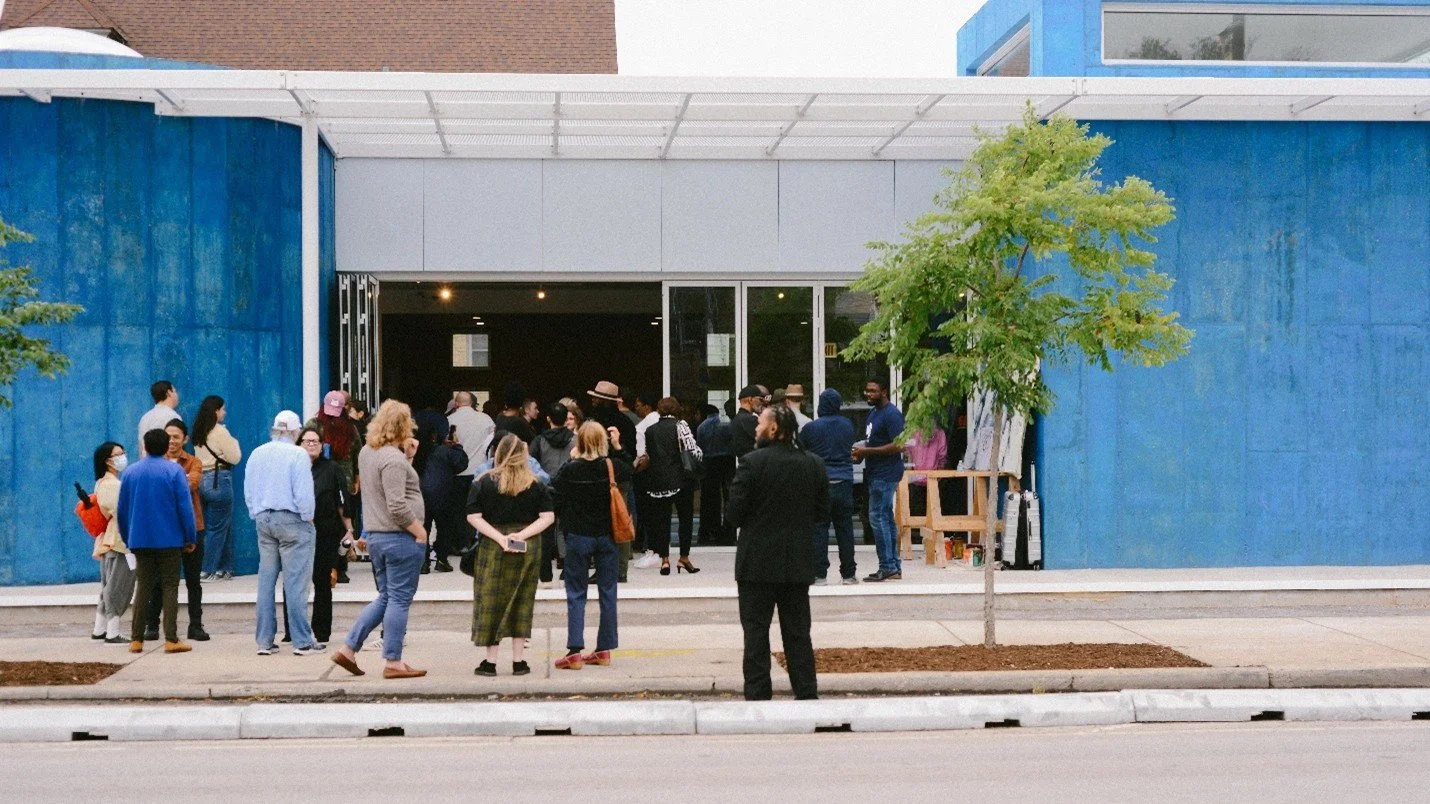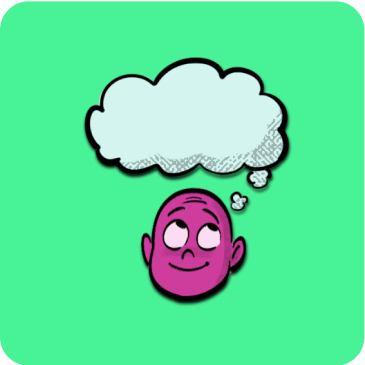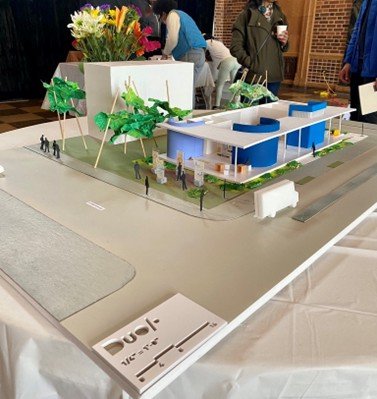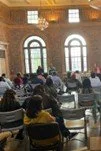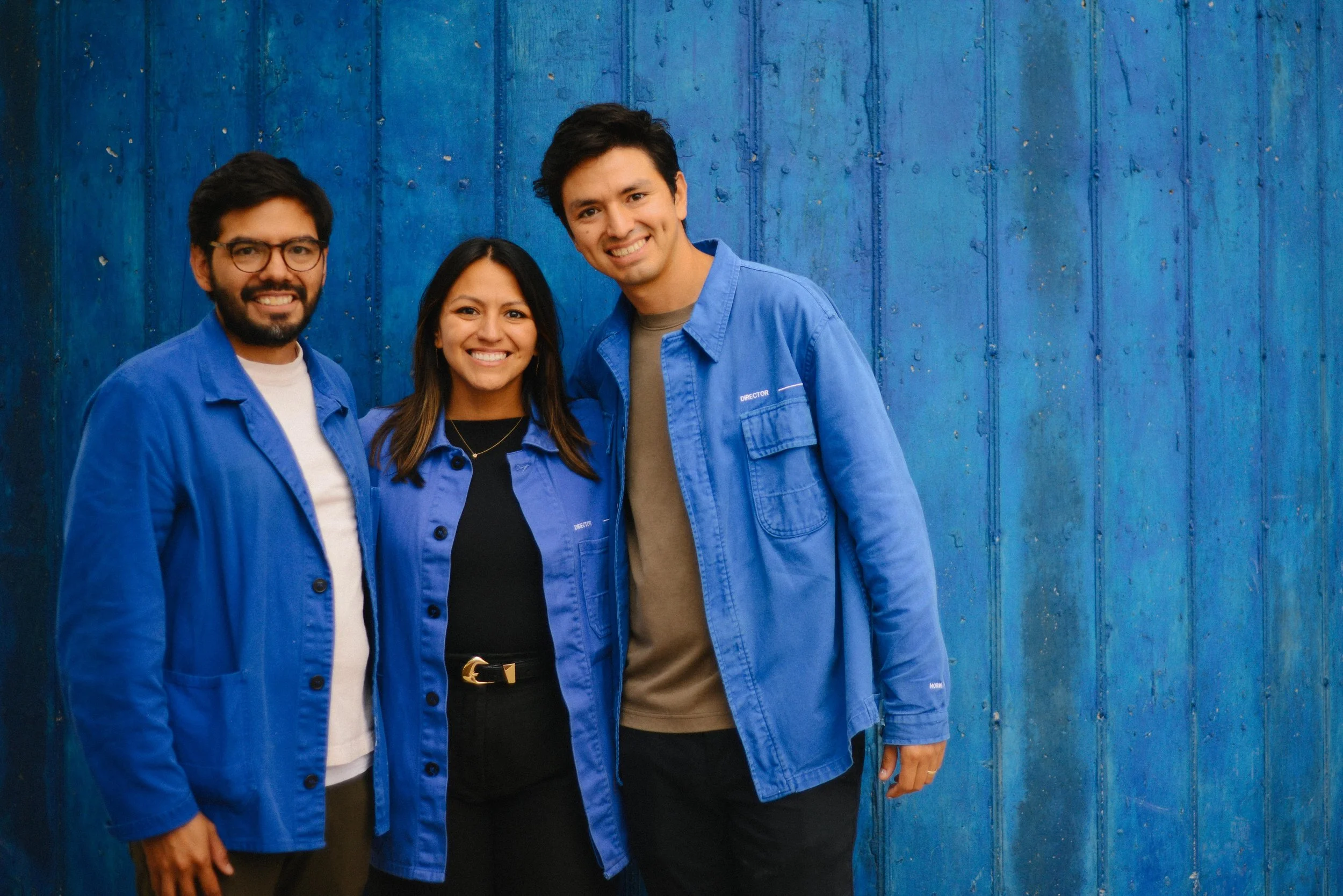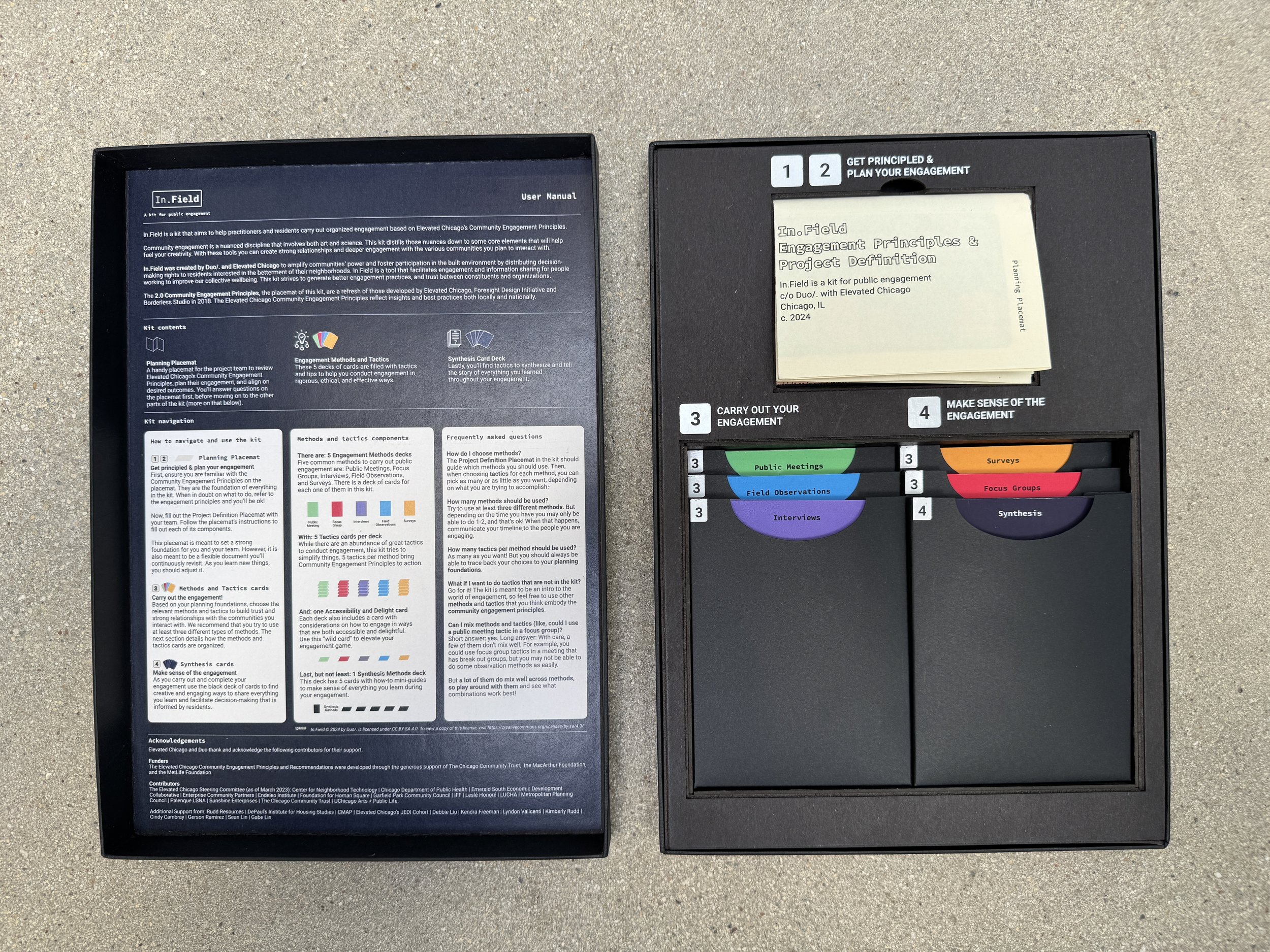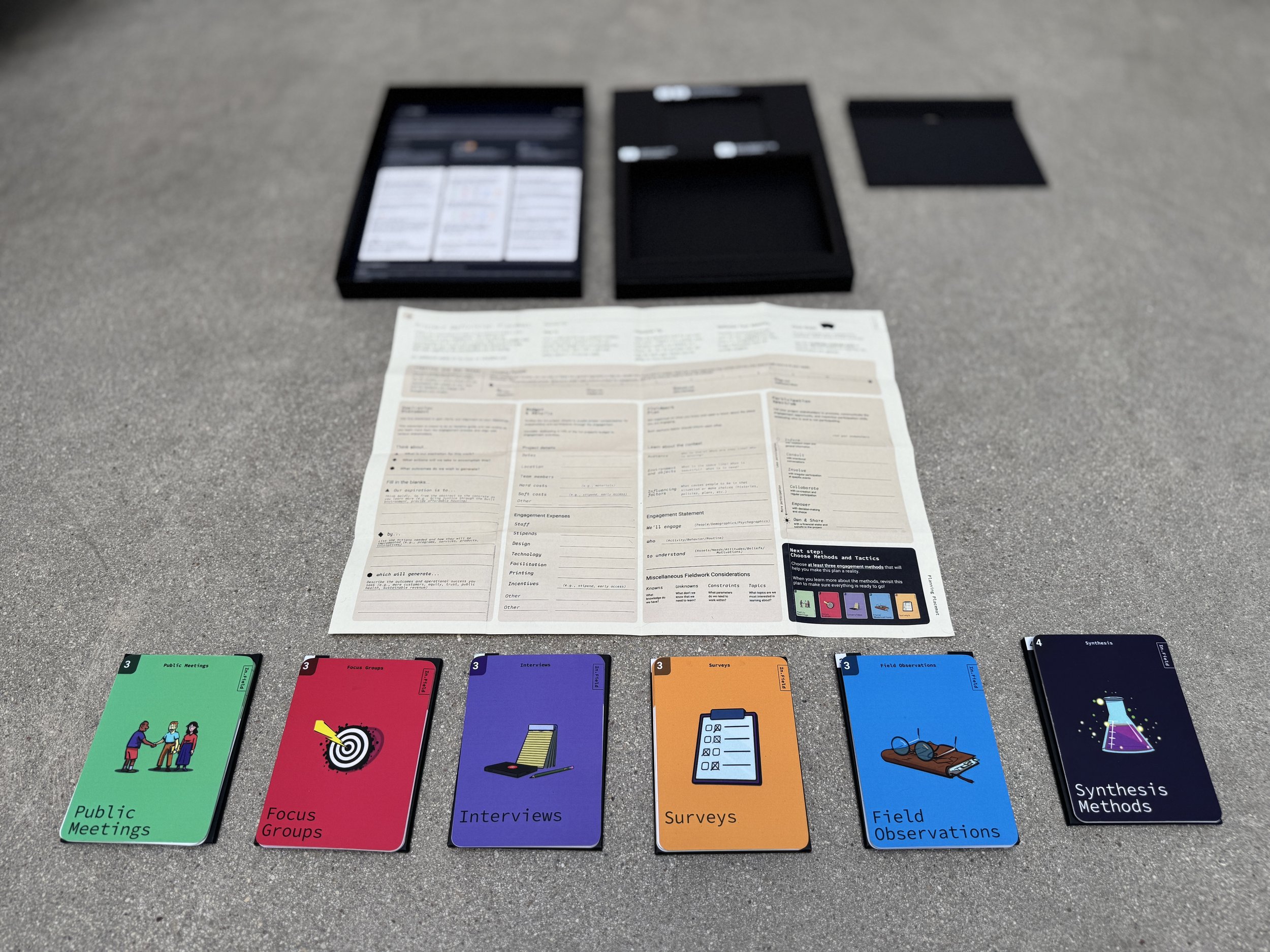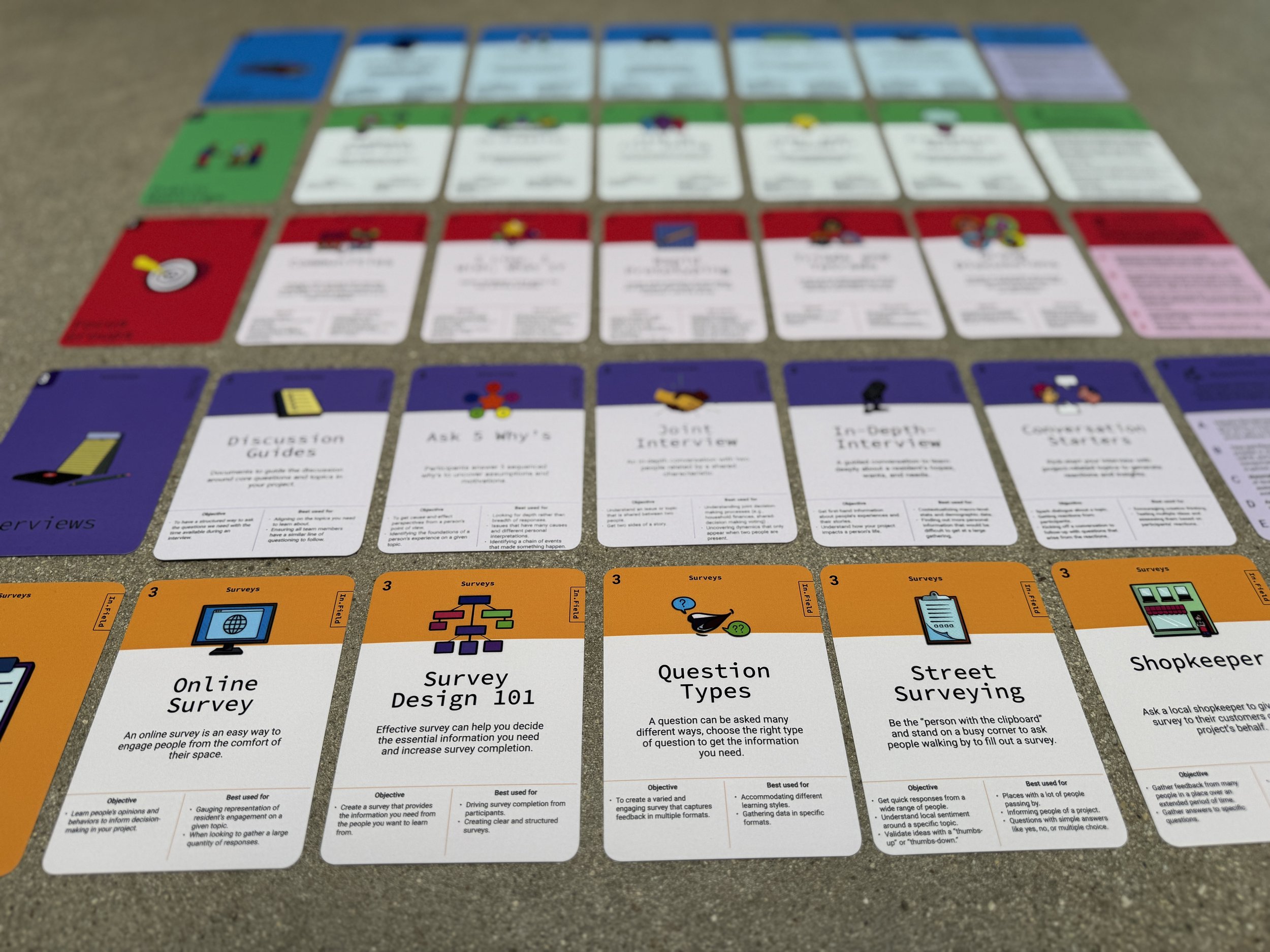Starling
Project Context
Location: 3243 W. 16th St. Chicago, IL, North Lawndale
Scale: 6,000 sf (2,500 sf indoors)
Construction Type: New Construction
Use: Public amenity
Starling is a new kind of building for people to gather, replenish, learn, and create to uplift our individual and collective liberations.
Located in North Lawndale, Chicago, the building offers flex spaces for neighbors to spend time with friends, read a good book, make art, relax in nature, or just hang out - all while enjoying a great cup of coffee, provided by Monday Coffee Co.
In.Practice
In.Practice
!
Grounding
with intention
Community Engagement Aspiration
Given that this would be the first new construction project of this kind in this part of 16th St. in over 60 years, Duo (the development team) wanted to be sure that this building was deeply informed by the needs and aspirations of the residents of North Lawndale all the way from the design, into the construction, and well into the operations of the building.
How In.Field facilitated community engagement
The Kit provided the structure for all the different types of engagement that needed to take place to bring this project to life. With the Kit in hand, the team was easily able to identify the questions they had yet to answer and make sense of all the insights they had already learned.
1
Planning
Placemat
Community Engagement Principles
The team constantly reflected upon the Community Engagement Principles, and a large focus was placed on the principle to Foster Ownership and Identity, from celebrating identities, activating the vacant lot before construction, and building in shared ownership for the building once it became operational.
Planning Placemat
The Timeline and Key Dates portion of the placemat was helpful to have alignment with the team and be able to share and communicate the expected length of time the project would take with people the team engaged.
The aspiration statement was a north star to make sure that when changes to the design of the building had to be made, they would follow and stay true to the intended concept and intent. This helped align vendors and contractors to work together toward a common goal.
The Fieldwork Plan was a helpful tool to avoid asking questions that had already been answered by past reports or organizations. This helped the team prioritize attending existing events, and meeting people where they already were to avoid adding the burden of additional meetings.
2
Methods
and Tactics
The main methods used by the team were: Field Observations, Surveys, Public Meetings, Focus Groups
Below, are details of each of the tactics that were used within each method.
Field Observations
-> Photo Journal to capture observations from walks and engagement opportunities across the neighborhood
-> Guided Tour from local organizations and neighbors
-> Observations across Activities, Environments, Interactions, Objects, Users (AEIOU)to capture a wide range of information
-> Intercepts, lots of intercepts to get to know the neighbors more and meeting them where they were
Surveys
-> Shopkeeper to help distribute surveys in person across local networks
-> Online surveys to reach a wider set of people that could not be met in person
Public Meetings
-> Co-creation sessions using a scale model to get resident feedback
Focus Groups
-> Group Discussions with various communities across the neighborhood
-> Rapid Prototyping for quick ideating and design ideas
Accessibility & Delight Cards
The team ensured that meetings were not adding unreasonable burdens to participants’ busy schedules and they also included child care when possible through local partners.
3
Synthesis Methods
Engagement Synthesis Cards
The Observations, Insights, and Implications card helped the team translate all their findings into actionable design insights.
The Community Composition tactic was used to align on the diversity and needs in the neighborhood. This allowed the team to identify 5 different behavior types to design for.
Duo’s Innovation Lenses allowed the team to see purely beyond the Economics of a project, and apply lenses of culture, ethics, technology, and ecology to the project.
Starling
Get In.Field
Get In.Field
The Kit
$85.00
1 In.Field Kit (carrying case 8.5”x12”x1”, instructions, 1 planning placemat, 25 tactics cards, 5 accessibility and delight cards, 5 synthesis cards)
Digital kit files
Invitation to special events from Duo and Elevated Chicago!
In.Field
group trainings
Pricing varies, please contact us to learn more
The value of our training:
Tailored half-day interactive workshop for your teams
Learn to use the Kit through real-life scenarios and case studies
In-depth overview on what went into the design of the kit
One kit for each participant
Digital kit files
Invitation to special events from Duo and Elevated Chicago!
Need Accommodations?
Let us know!
Discounted options are available if resources are a constraint for you and/or your organization. Please contact us so we can discuss a plan of action that best fits your needs.
Also available upon request:
Special group/bulk order pricing
Large font format
Translated versions (any language you want!)
Let’s
Chat!
If you have any questions, feel free to reach out and someone from the Duo Development team will be in touch.

